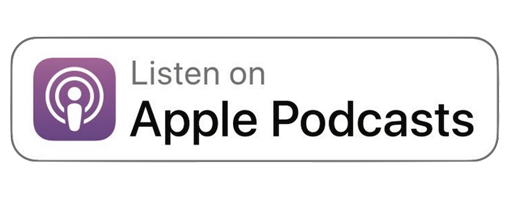Speak Clear English - Enroll Today
english & technology:
IoT – Internet of Things
 Source: Diário de TI
Source: Diário de TI
In the globalized world we live in, new technological concepts are emerging quickly and we need to be aware of these changes. The Internet of Things (IoT) is a buzzword that everyone is talking about. But what does it mean?
What is the Internet of Things?
The concept of the Internet of Things (IoT) began to be developed in 1999 by the Massachusetts Institute of Technology (MIT). When that research started, the computer was the only device that had access to the internet. Currently, cell phones, tablets, TVs have this access, in addition to objects such as watches, cars and refrigerators. Through networks and systems, devices, our routines are shared, generating data that aim to help our daily lives.
The Internet of Things refers to the digital interconnection of everyday objects with the internet. It is a network of physical objects that are capable of gathering and transmitting data. It is an extension of the current internet that allows everyday objects to have computational and communication capacity, through Internet access, enabling remote control and monitoring of these objects. These new capabilities are endowed with benefits and harms, each one listed according to the intensity and form of use of these resources.
Examples of the Internet of Things
– Smart cars: increasingly autonomous vehicles, thanks to IoT. With technology, they can communicate with a mobile device and exchange data, optimizing commute time and generate more safety in driving.
– Automation in retail: automation of the retail business, such as monitoring the times of greatest flow of customers for managing people in a certain sector, determining the target audience, age group, among other aspects.
– Industrial sensors: This is one of the main development of Industry 4.0. It occurs through the modernization of systems, through the implantation of sensors in machines, making the manufacturing process increasingly intelligent and autonomous, with the machine being able to manage its own activities. The data generated in these systems are normally sent to the management system for analysis of production performance.
– Smartwatch: optimizes and extends cell phone functions. It has systems such as monitoring heart rate and documenting of physical activities.
– Smart homes: enables the control and monitoring of objects in smart homes. Communication takes place through electronics communicate with a smartphone to allow the user to manage environments in the palm of their hand. Examples are intelligent refrigerators, the automation of automated shopping, television and lighting systems.
– Smart thermostats: accessories that measure the temperature of an environment, working with the regulation of devices such as air conditioning or heaters, adapting the equipment to people’s routine and the reality of the environment in which they were installed.
– Smart cities: a wide application of digital technologies to improve a population’s way of life. An example of this occurs in Barcelona, where the waste collection system is fully automated and works under a vacuum, with a system interconnecting the dumps through an underground network.
– IoT in healthcare: provision of devices that connect and share patient and research data, facilitating and optimizing the delivery and receipt time for diagnoses.
English Vocabulary to Know about IoT
1) Emerging : starting to exist.
2) Acronym: an abbreviation consisting of the first letters of each word in the name of something, pronounced as a word.
3) Network: a large system consisting of many similar parts that are connected together to allow movement or communication between or along the parts, or between the parts and a control centre.
4) Systems: a set of connected things or devices that operate together.
5) Devices: an object or machine that has been invented for a particular purpose.
6) Shared: owned, divided, felt, or experienced by more than one person.
7) Interconnection: connection with other things that are related to each other.
8) Transmitting: to broadcast something, or to send out or carry signals or messages using radio, television, etc.
9) Monitoring: observe and check the progress or quality of (something) over a period of time; keep under systematic review.
10) Resource: a useful or valuable possession or quality of a country, organization, or person.
Did I miss any acronyms or terms related to e-mail that you want to know? Comment below to request more tech-related acronyms or terms to be added to the list.
Ready for more English? Speak English clearly when you join one of my life-changing English courses.
Click on one of the following links to start speaking clearer English!
1) CLEAR ENGLISH PRONUNCIATION VIDEO COURSE
2) ENGLISH VOCABULARY – AUDIO FILES & PDF – TOEFL & IELTS
3) IDIOMS IN CONVERSATION
4) JUMPSTART YOUR ENGLISH AUDIOBOOK + EBOOK
Follow us on Youtube and Instagram:
@studyenglishwithandrea – Daily English posts
@citizenshiptest – To prepare you to pass the United States Citizenship Test
Until next time, Happy Learning!
https://www.totvs.com/blog/inovacoes/aplicacoes-da-internet-das-coisas/
https://www.digitalhouse.com/br/blog/exemplos-de-internet-das-coisas
Speak Clear English - Enroll Today

Jhessika Nascimento
Director of International Partnerships
Jhessika Nascimento is the Director of International Partnerships for Study With Andrea and lives in Brasilia, Brazil.
Jhessika is a bilingual teacher of English and Portuguese, studying for a Master's Degree in Strategic Management in Information Technologies at the Universidad Internacional Iberoamericana.
Graduation in Letters - Portuguese and English.
Postgraduate in Teaching in Higher Education.
Postgraduate in Risk Management and Cybersecurity.
Postgraduate Executive MBA in Process Management BPM-CBOK.
Postgraduate in Translation and Proofreading of Texts in English.
The following is a TOEFL Reading practice test to help you prepare for the Reading section of the TOEFL test.
Instructions: Read the sample passage below and then answer the questions that follow.
TOEFL Reading Practice Passage
Gorillas are ground-dwelling, predominantly herbivorous apes that inhabit the forest of central Sub-Saharan Africa. The genus Gorilla is divided into two species: the eastern gorillas and the western gorillas (both critically endangered), and either four or five subspecies. They are the largest living primates. The DNA of gorillas is highly similar to that of humans, from 95 to 99% depending on what is included, and they are the next closest living relatives to humans after the chimpanzees and bonobos.
Gorillas' natural habitats cover tropical or subtropical forest in Sub-Saharan Africa. Although their range covers a small percentage of Sub-Saharan Africa, gorillas cover a wide range of elevations. The mountain gorilla inhabits the Albertine Rift montane cloud forests of the Virunga Volcanoes, ranging in altitude from 2,200 to 4,300 metres (7,200 to 14,100 ft). Lowland gorillas live in dense forests and lowland swamps and marshes as low as sea level, with western lowland gorillas living in Central West African countries and eastern lowland gorillas living in the Democratic Republic of the Congo near its border with Rwanda.
(#1) Gorillas move around by knuckle-walking, although they sometimes walk upright for short distances, typically while carrying food or in defensive situations. (#2) A 2018 study investigating the hand posture of 77 mountain gorillas at Bwindi Impenetrable National Park (8% of the population) found that knuckle walking was done only 60% of the time, and they also supported their weight on their fists, the backs of their hands/feet, and on their palms/soles (with the digits flexed). (#3) Studies of gorilla handedness have yielded varying results, with some arguing for no preference for either hand, and others right-hand dominance for the general population. (#4)
The eastern gorilla is more darkly colored than the western gorilla, with the mountain gorilla being the darkest of all. The mountain gorilla also has the thickest hair. The western lowland gorilla can be brown or grayish with a reddish forehead. In addition, gorillas that live in lowland forest are more slender and agile than the more bulky mountain gorillas. The eastern gorilla also has a longer face and broader chest than the western gorilla. Like humans, gorillas have individual fingerprints. Their eye color is dark brown, framed by a black ring around the iris. Gorilla facial structure is described as mandibular prognathism, that is, the mandible protrudes farther out than the maxilla. Adult males also have a prominent sagittal crest.
A gorilla's lifespan is normally between 35 and 40 years, although zoo gorillas may live for 50 years or more. Colo, a female western gorilla at the Columbus Zoo and Aquarium, was the oldest known gorilla at 60 years of age when she died on 17 January 2017.
Questions
1. According to the passage, gorillas can live in
a. a variety of altitudes.
b. several different countries in Africa.
c. thick forests.
d. lowland forests only.
2. All of the following is true about gorillas EXCEPT
a. they primarily eat smaller animals.
b. they live in a forest habitat.
c. their genetics are similar to humans.
d. their diet consists of vegetation.
3. Look at the word predominantly in paragraph 1. The word predominantly in this passage refers to
a. impulsively
b. unfortunately
c. mainly
d. lastly
4. Look at the word inhabits in paragraph 2. The word inhabits in this passage refers to
a. lives in
b. protects
c. goes
d. works
5. The author implies that
a. most gorillas prefer using their left hand over their right.
b. gorillas rarely walk on their knuckles.
c. gorillas regularly walk upright for long distances.
d. studies haven't solidly proven which hand gorillas prefer using.
6. Why does the writer mention that the eastern gorilla also has a longer face and broader chest than the western gorilla?
a. To validate the importance a broad chest in western gorillas
b. To define the meaning of "broad"
c. To highlight a physical difference between types of gorillas
d. To demonstrate that most gorillas are identical in physical build
7. Which of the following statements is true for BOTH eastern and western gorillas.
a. Both eastern and western gorrilas are brown with red foreheads.
b. Both eastern and western gorrilas have unique fingerprints.
c. Both eastern and western gorrilas have thin hair.
d. Both eastern and western gorrilas have light brown eyes.
8. In Paragraph 3, look at the four numbers (#1, #2, #3, #4) that indicate where the following sentence would be added to the passage.
Such a range of hand postures was previously thought to have been used by only orangutans.
Where would the sentence best fit?
(View all the correct answers below.)
Great job! If you're ready to take your TOEFL preparation to the next level, go to StudyWithAndrea.com/TOEFL.
Answers: 1. d 2. a 3. c 4. a 5. d 6. c 7. b 8. #3
Click on one of the following links to start speaking clearer English!
1) TOEFL MASTER CLASS
2) free mini-course "punctuation mistakes to avoid"
3) Clear English Pronunciation Video Course
4) English Vocabulary - Audio Files & PDF - TOEFL & IELTS
About Andrea
Andrea Giordano is the founder of StudyWithAndrea.com and has taught more than 1,000,000 students from 180 countries. Andrea holds a Master of Education (TESOL) from Shenandoah University, and is the former Executive Director of TESOL and ESL programs at Campbellsville University. Andrea is a proven leader in online English teaching and is driven by her passion to help you speak English clearly.





